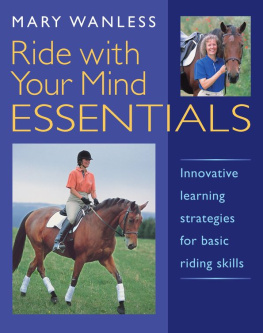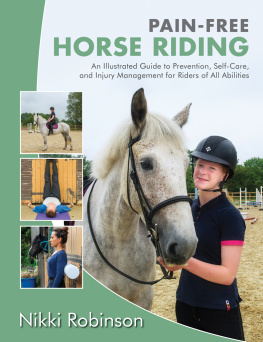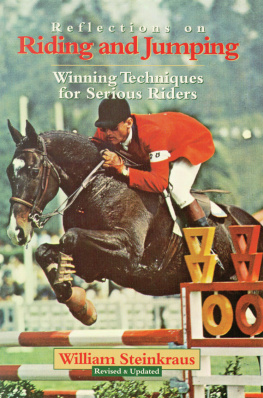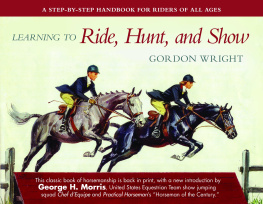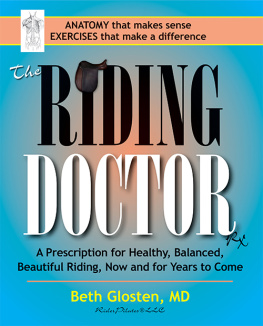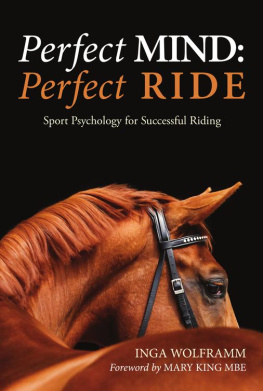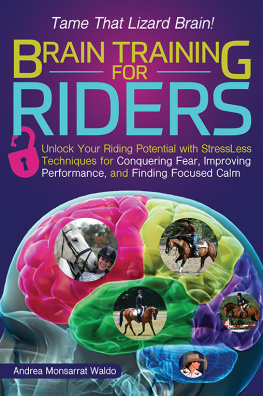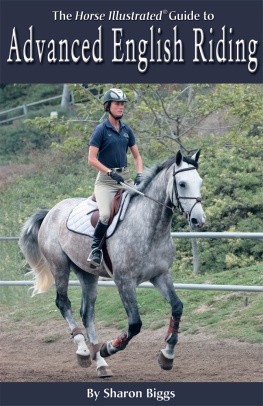Introduction
How to Use This Book
Learning to ride well is a mammoth task far larger than most riders realise. But paradoxically, skilful riding is also much more possible than most peoples experience suggests. Whilst beginners make rapid progress, most of them become club level riders who are stuck on a plateau despite the investment of time, money, hope, prayer and will-power. If you are willing to think outside the box it need not be this way.
Much of the received wisdom of riding is hearsay, yet most riders act as if those traditional tenets were etched on tablets of stone. Those familiar phrases simply describe feelings that a good rider had one day and then taught to her student, who taught them to her student, who taught them to her student and so on, like a giant inter-generational game of Chinese Whispers (also known as Telephone). Somewhere along the line they became generalisations considered good for all riders at all times rather than helpful pointers for certain people at certain stages in learning.
The meaning of some of them, like push for example, has changed so dramatically over the years that their interpretation has evolved from chalk to cheese. This process has led to a culture of vagueness and misunderstandings , perpetuated and believed by teachers and pupils alike. The chain continues since few people are brave enough to challenge it by asking , Exactly what do I push with, and how do I push with it? (The answer to this is on page 36.) We all know that this level of inquisition might not endear us to our teachers and their reaction could, of course, cover up the fact that they do not know the answers. Thus the blind keep leading the blind, whilst the small percentage of sighted (or talented) riders cannot untangle the web and teach us all to see.
The horse world is rich in descriptive knowledge that tells us what horse and rider should look like. But traditionally we lack good information about how. Good riders just do it, without knowing how they do it, and without understanding why you are not like them and cannot do it. Furthermore, what they say they do may well not match what they actually do hence they can actively maintain the split between popular misinterpretations and their personal embodied (but not necessarily verbal ) understanding of riding.
Even when good riders accurately report what they do, what works for them may not work for you, and many of those traditional phrases represent feelings worth aiming for when you are already an accomplished rider. Grow up tall and stretch your leg down is one of these. Good riders usually tell us about the tip of their personal iceberg of skill and have little conception of the enormity of the skill-base that lies beneath the surface of their awareness. What eludes the average rider are the skills that these good riders take for granted and cannot put into words.
It has been my personal mission to uncover this hidden part of the iceberg . During twenty-three years of research I have done everything in my power to expose the secrets of talent, breaking them down into bite-size chunks and finding ways of describing them that work for average riders. The net result is that I and my colleagues can clone good riders. Accomplished riders who are aiming for the top seek my expertise with the fatal flaws that have proved persistent and hard to fix, whilst many club level riders simply want to know that their basics work well enough to prevent them from torturing their horses.
In our work it is as if we give each rider a tool kit, or refine the tool kit that she already has. This first tool kit concerns her body, for its position and texture, its asymmetry, and its stability (or lack of it), affect the horse profoundly. In both you and your horse there are places where movement goes through and places where it is blocked, deadened, dissipated or disorganised . As you affect him and he affects you, the influence of your body mechanics, for good or ill, is enormous but this is rarely acknowledged. Many trainers, for instance, ignore the riders way of sitting and think only of teaching her to ride the school movements. These form the riders second tool kit, and when done correctly (from a body that functions well) they undoubtedly have profound training effects. But we cannot afford to negate the exquisite sensitivity that horses have to our body mechanics.
When we riders run out of tools we all resort to shove, kick, pull and pray; but long before this (when there is but a tiny nick in our chisel) we start having negative effects on our horses. They are born with the ability to read us like a book, and they play on our weaknesses, evolving their evasive patterns around the loopholes that we offer them. They mirror us, in both our rightness and our wrongness. Also, they know our bottom line how determined we are, and how little effort we will accept. When you change, your horse changes, and you are the key to evasions, limitations and attitudes that many would attribute to him alone. The impact you have on him is far greater than you realise.
Whatever level you ride at or aspire to, coupling this realisation with effective teaching tools turns your riding into a journey of learning and exploration, and this makes it much more fun for both you and your horse. Approaching it like this certainly beats going round and round in circles making the same mistakes, facing the same frustrations, and trying harder in response. As Portia Nelson says so beautifully in her poem, the hole in your sidewalk will not go away, but once you have realised its existence you can begin the process of choosing not to fall in it. From the time that your eyes are open it does not take so long for you to choose to walk round it, and ultimately, we can all decide to walk down a different street.
This is an interesting time for my work. In the world of fitness and exercise, core muscle strength is being recognised as an essential component . It is being emphasised particularly in the Pilates system of training, and in work with physioballs (also known as gymnastic balls), and many fitness trainers now believe that it enhances almost any sporting skill. The basis of my message has been that the need to stabilise the body on top of a moving horse demands this strength, and that this is the most basic component of talent. Only now is laboratory research attempting to discover what good riders actually do (as opposed to what they say they do). We will soon know beyond any shadow of doubt that the rider who looks and feels as if she is doing nothing is actually presenting one of the greatest optical illusions of all time.
You may want to read this book straight through to gain an overview of the ideas it presents. When you begin your work with it, go slowly and take time. Be open-minded and curious. Meld a willingness to experiment with a thorough, diligent approach. Remember that this is only the tour guide, just as your teachers are only tour guides. You yourself must take the tour.

